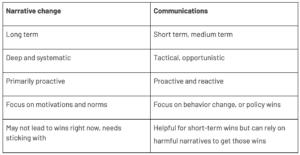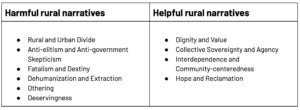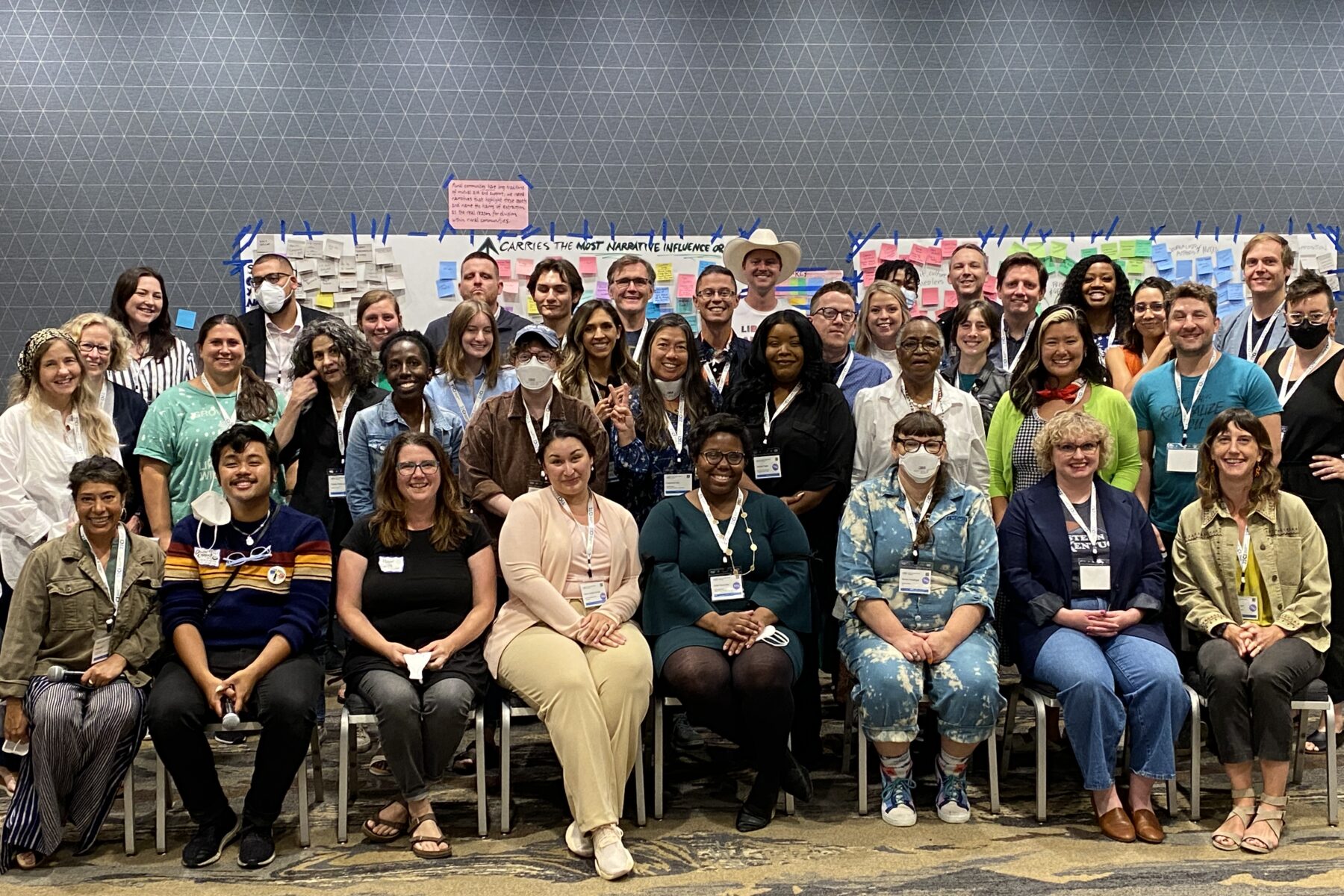Rural Pre-conference at 22nd Century Initiative in Minneapolis
In organizing, many progressives fall into traps that cast rural Americans as antagonists to progress writ large. This erases both rural people who are working towards racial, gender, economic, and migrant justice and the particular concerns, realities, and assets of rural communities. At our best, our many movements have shown that we can coalesce around values and visions that unite our causes. Both rural and non-rural movement people have the chance to build common ground around racial, economic, and gender justice to draw in more constituencies that grow the collective power. By sharing wisdom about how issues like housing, good jobs, climate threats, the opioid crisis, and more connect with native sovereignty, immigration justice, and the fight against authoritarianism and violent extremists, we seek to gather and connect communities together as we forge pathways toward multi-racial democracy.
In the lead-up to the 22nd Century Conference in Minneapolis, Minnesota this past summer, Narrative Initiative recognized a unique opportunity to engage with dozens of rural organizers and narrative change practitioners on-site to maximize the moment together, to connect and share joy, to reflect and inspire one another, and to dive into a deep conversation by:
- Landscaping harmful and helpful narratives that affect rural progressive organizing and communications work
- Building out an understanding of how those narratives drive or erode power-building, and
- Strategizing about resources, platforms, and tactics to transform narratives about rural America
Narrative Initiative invited rural organizers to a pre-conference to collectively address these opportunities and to build and deepen relationships between participants. Strong connections and knowledge of each other’s work produce unexpected and often transformative cross-movement efforts. Participants joined a day of discussions, presentations of research landscaping and sensemaking, and collective workshopping of ideas, power mapping, network mapping, and sharebacks.
Shared Language
“The distinction between narrative & communications is key.
Narrative often sounds polished & rehearsed, while communications include everyday speech. How do they work together and get used effectively in our organizing? I would like to expand my horizons to understand better cultural organizing strategy and how narrative supports a broader range of organizing practice”
– Rural pre-conference survey respondent
To orient our discussions we shared a framework of how narrative change operates differently than strategic communications:

Harmful Narratives
Harmful narratives hold back our vision of the future. They stand in the way of the future we’re building, and frequently maintain existing power structures. It’s worth knowing harmful narratives that impact our work so we can avoid amplifying them, just like it’s a good communications practice to avoid repeating your opposition’s messages. Together at the pre-conference, we surfaced the following harmful narratives about rural people and communities:
- Rural and Urban Divide
- Anti-elitism and Anti-government Skepticism
- Fatalism and Destiny
- Dehumanization and Extraction
- Othering
- Deservingness
Rural and Urban Divide
This harmful narrative includes ideas about ruralism being a monolith—largely consisting of white, cisgender, heterosexual, conservative people—which masks how much diversity exists in rural communities and in rural areas. It shows up in statements like: “All rural people are X, and all city people are Y.” A deep narrative of the rural/urban divide also reinforces the idea that people living in rural areas are powerless and in need of saving—either from themselves or as a result of an external force acting on them (e.g., natural disasters, politics). This narrative also underpins ideas of rural areas offering people less education and fewer opportunities for advancement.
Anti-elitism and Anti-government Skepticism
This narrative includes ideas about what rural people think about the government, namely that it is bad and tyrannical, indicating a deep skepticism and lack of trust due to histories of oppression by the United States government. Folks from rural areas may conflate systemic issues with government failures, believing the government itself is fundamentally corrupt rather than that failures of the government are a reflection of centuries-old systemic injustice and inequality. Relatedly, liberal folks in rural areas may reinforce ideas about power and money being ‘bad,’ which speaks to themes of rugged individualism and anti-elitism.
Fatalism and Destiny
This narrative surfaces in statements like “rural decline is inevitable” and “nothing will get better.” It is the framework for ideas about rural communities being a “lost cause” politically, socially, economically, and otherwise. This narrative also underpins the idea that if you are from a rural area, part of achieving success in life means getting out. Because of the underlying belief that rural areas are destined for failure, leaving a rural area means a person has “made it.”
Dehumanization and Extraction
This narrative speaks to a belief that the ultimate value of rural communities is in what can be extracted from them, including people, skills, natural resources, land, and more. Similar to the rural and urban divide, the deep narrative of dehumanization reinforces ideas about rural people needing to be saved. Popular phrases like “Farmers feed America” are also tangled up in a deep narrative of dehumanization by invoking imagery of farmers (often white men) as heroes while invisibilizing actual farm workers (often Black, Brown, Indigenous, and other people of color). Also related to this deep narrative is a particular shame associated with stereotypical notions of rural people; for example, that all rural folks are fundamentalist Christians with discriminatory beliefs about people who are different from them.
Othering
This narrative refers to an unfamiliar “other” (e.g., someone or something we don’t recognize, endorse, and/or understand). Sometimes this narrative appears in racialized ways, where a minoritized group is treated in a fetishizing or ostracizing way based on racialized stereotypes. This narrative also appears in anti-transgender sentiments commonly espoused by conservative people, some of whom live in rural areas. A deep narrative of othering emphasizes dissonance and division, and underpins the idea that “we are too different to work together, so we should just stay divided, small, and isolated.”
Deservingness
This narrative emphasizes the idea that “people deserve their lot.” ‘People’ here especially includes poor, rural, LGBTQ+, Indigenous, Black, and other populations that find themselves in the minority. A narrative of deservingness also reinforces the idea that hard work is good and that a person should strive to be hardworking in order to deserve good things. Class is a factor in deservingness narratives, as evidenced by underlying beliefs that “poor people are stupid and they deserve the struggles” coupled with “rich people are good, smart, and hardworking, and they deserve their success.”
Helpful Narratives
Helpful narratives allow you to imagine the future you dream of. They advance your work and make your impacts more durable. Together at the pre-conference, we surfaced the following helpful narratives about rural people and communities:
- Dignity and Value
- Collective Sovereignty and Agency
- Interdependence and Community-centeredness
- Hope and Reclamation
Dignity and Value
This narrative centers the inherent dignity and worth of all rural people and places. It reinforces the idea that land in rural areas has intrinsic value, and folks who live in rural areas are only stewards of those resources and their value. This narrative also appears in phrases like “nurturing the margins nurtures the whole,” a sort of rising tides lift all boats approach to thinking about community support and mutual aid.
Collective Sovereignty and Agency
This narrative relates to other deep narratives such as the freedom to be self-determined and to author the story of your own life. It speaks to a desire in rural communities to activate individual power for collective change. This narrative appears in the catchphrase, “Who governs us is us,” and shows up clearly during moments of shared need or crisis. For example, during the recovery period following a natural disaster, this narrative manifests as the idea that “local people solve local problems,” as opposed to rural communities needing intervention from outside forces (e.g., government aid and political elites). A deep narrative of collective sovereignty and agency also shows up in ideas about Southerners being “fighters and rabble-rousers who know how to get things done.”
Interdependence and Community-centeredness
This narrative is reflected in the idea that “we all do better when we all do better.” It is about a particular kind of neighborliness that is felt by people from rural communities and observed by those visiting rural areas (e.g., “Everyone is so kind here”). Similar to the narrative of collective sovereignty and agency, this narrative reflects a belief that neighbors are the ones who help each other in times of need – not outsiders (e.g., Washington elites) or people interested in extracting resources from rural communities. The popular phrase “it takes a village” speaks to this narrative, as do ideas about community safety being rooted in wellness and togetherness.
Hope and Reclamation
This narrative captures the spirit of hope for a better future and the belief that a better world is possible. It is present in the idea that rural people can reclaim the history of solidarity and mutual aid that has existed for centuries in rural communities. It centers on abundance rather than scarcity, and emphasizes the idea that “wealth was created by the people and you deserve a rightful share.” This narrative also reminds rural organizers to celebrate small victories, many of which are hard-fought, and to rest early and often in order to sustain the work for the long term. Opposite the deep narrative of fatalism, this narrative shows up in the belief that things can and will get better, and “we can win, because we’ve done it before and we’ll do it again.”
Table of Harmful and Helpful rural narratives revealed at pre-conference

Learnings
Takeaways from our generative discussions include the following observations, cautions, and opportunities to expand our muscles to create more change:
- Rural communities have long traditions of mutual aid, self-governance, and support. We need narratives that highlight these assets and name the harms of extraction from rural communities.
- Narrative strategy needs to be connected to the community. It’s not about going on the “offensive.” It is about leading with values, considering all of our humanity, and looking at the horizon.
- Power is also relationships and we have a lot of those in our networks that we can utilize for narrative shift. Doesn’t necessarily mean we need the same amounts of money.
- We do have community, as evidenced by the many, many people and organizations named in our network mapping exercise, although the volume of connections may not always be obvious. Our connections with each other are an asset that we can draw from as we move forward and strive to build power in rural communities.
- Looking toward the future, it is important to consider how to engage more grassroots organizations in this work, particularly because they seem to have a significant amount of narrative impact.

